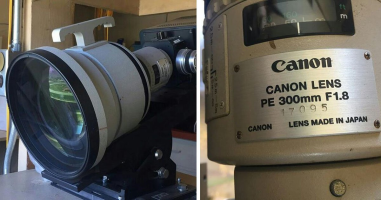I’m curious of the reasoning behind this. We don’t have optical VF’s on “TV” cameras. They’re all electronic. NFL Films guys have been largely shooting on Amira’s for years, now, which have EVF’s. All those super tight, super slow-mo replays you see on TV are from video cameras with EVF’s.
Now, I’m not saying I know anything about the performance of the R5’s EVF, but just because it’s an EVF doesn’t necessarily make it unsuitable for and preclude it from being able to shoot sports. If that were the case, well, no one would be watching sports on TV.
I’d also make the argument, that if using the electronic shutter doesn’t have any negative consequences vs. the physical/mechanical shutter(like skew, other RS artifacts), then sports shooter should rejoice, because now the VF image is no longer blacked-out during exposure. When shooting with a traditional DSLR how often and for how long is their no image in the VF during a typical “rip” of images? I haven’t shot with a mirrorless like this, so I don’t know, but I’d have to imagine that even using the physical shutter, there’s probably (at least a little) less black-out time, even then, since there is no longer a mirror having to me moved in and out of place, either.

